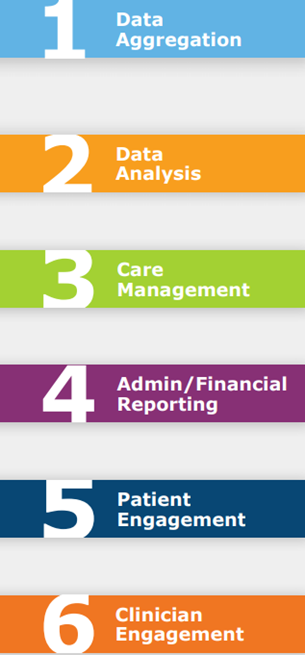
Why Defining Population Health Matters
In 2017, KLAS brought together a large group of the leading providers and vendors who had done the most work in population health management (PHM). The purpose of bringing these leaders together was to hone and refine the industry’s 2016 definition of population health.
We’d decided to do this for several reasons. One was to help the industry to better grasp a deep and broad market segment. As Albert Einstein reportedly said, “If you can’t explain it simply, you don’t understand it well enough.” More importantly, we knew that outlining some specifics would help everyone in the healthcare world set and meet realistic expectations.
History of the Framework
On the surface, constructing a framework to define population health may sound simple, but as we learned, it is the very definition of “easier said than done.” As we’ve deepened our research during the intervening year, KLAS has realized just how much detail an effective population health framework requires.
 The original framework was created two years ago. It provided an early attempt to bring key stakeholders into agreement on the most important aspects of PHM. As more providers worldwide began focusing on incorporating population health into their healthcare strategy, we saw a need to expand our scope. We pulled in broader perspectives in an effort to create something with more global application.
The original framework was created two years ago. It provided an early attempt to bring key stakeholders into agreement on the most important aspects of PHM. As more providers worldwide began focusing on incorporating population health into their healthcare strategy, we saw a need to expand our scope. We pulled in broader perspectives in an effort to create something with more global application.
The updated KLAS Population Health framework consists of six elements or verticals: data aggregation, analysis, care management, administrative/financial reporting, patient engagement, and clinician engagement.
The original version of this framework included just the first four pillars. But as KLAS grew in our understanding of the market, we realized that engaging both clinicians and patients is not only essential to success but deserves the focus of both vendors and providers seeking to build, buy, and implement population health solutions.
How the Framework Helps Providers and Vendors
Population health, a market still very much in its infancy, has a flood of various vendors all marching under the banner of “comprehensive population health management” but driving toward a number of different goals. By defining exactly what population health encompasses and breaking PHM into pieces, we hoped to help providers lay out strategies that would drive toward specific outcomes rather than nebulous goals.
We hope providers will look at each of these six areas, identify where improvements should be made, and consider who of the many PHM vendors can best help solve their unique problems.
I recently spoke with a CIO from the UK who explained that she’s found a lot of utility in KLAS’ definition of population health. For example, when her department leaders come to her saying, “We’d like to expand our efforts in population health,” she’s able to help them define exactly what they’re talking about and then start on the path of identifying vendors who are best suited to partner with them.
Perhaps we’ll soon see vendors that cover the entire breadth of population health. But for now, providers looking to expand their PHM goals will probably have to recruit a team of vendors instead of a sole, star player. As we continue measuring tools against KLAS’ population health framework, we’ll be able to help providers know which vendors excel in certain areas and where tools may be lagging.
Providers can also reference the framework during their interactions with vendors. Instead of wondering exactly what a vendor means when they claim that they “do population health”, provider leaders looking to buy new tools can ask questions about specific pillars and functionalities. This will hold vendors accountable and empower providers in their buying decisions.
It is important for vendors to note that they will best serve customer needs (and achieve high marks of customer satisfaction) as they approach new business opportunities with open, honest assessments of their capacity to deliver on the six verticals of population health. Exaggerating or overpromising will never give a vendor more than a short-term win and a damaged reputation. On the other hand, setting realistic expectations will minimize disappointment for everyone involved.
Digging Deeper
While encouraged by the help our framework has already afforded, KLAS knows that population health still has significant depths to explore and intricacies to clarify. We plan to zero in on each of the six pillars of population health individually. We’re especially excited for our upcoming conference on patient engagement, where we will to share the data we’ve already gathered and collect further insights and thought leadership from provider and vendor experts in the space.
Our conversations with vendors and providers have revealed that both parties share the same desire: to improve healthcare through effective population health efforts. KLAS is eager to help. As we continue to tenaciously research a complex market segment and share what we learn, we hope to see continued progress and increased satisfaction around each of population health’s six pillars.
Photo credit: engel.ac, Adobe Stock